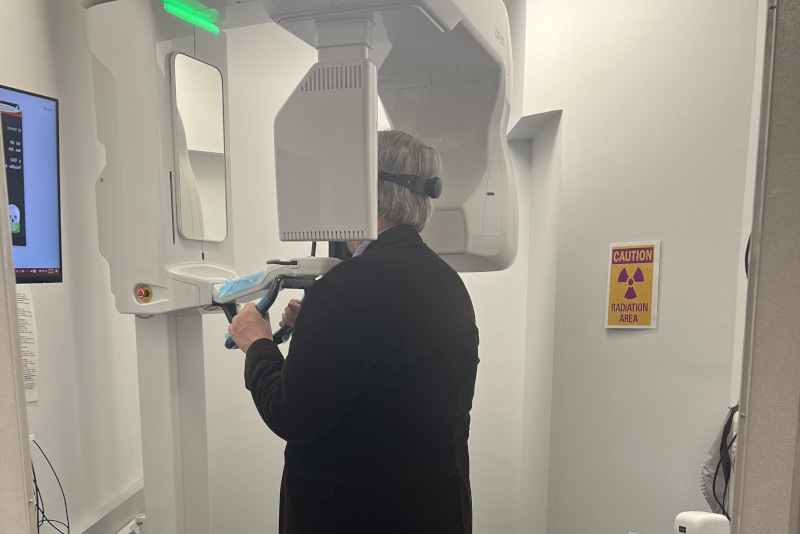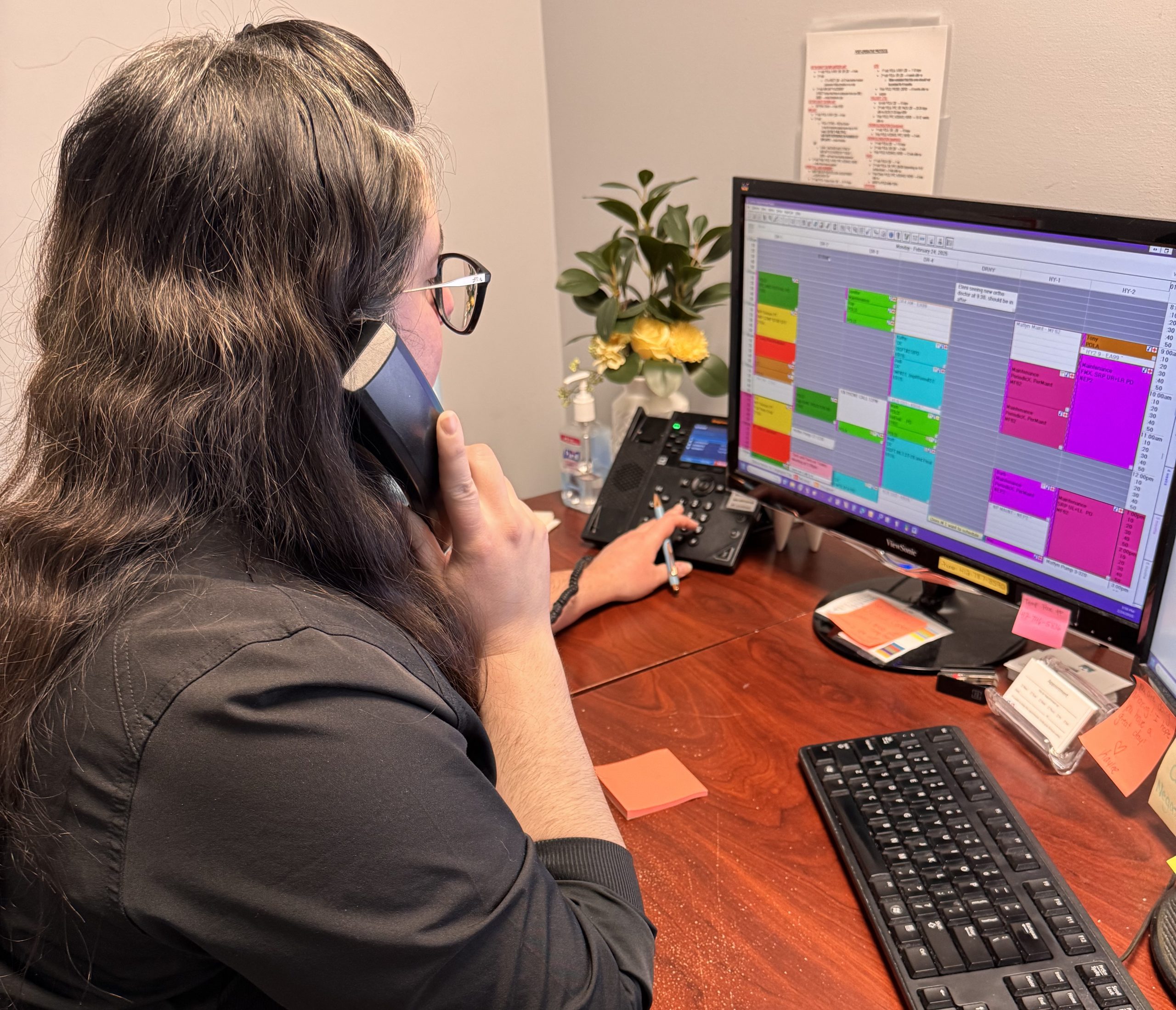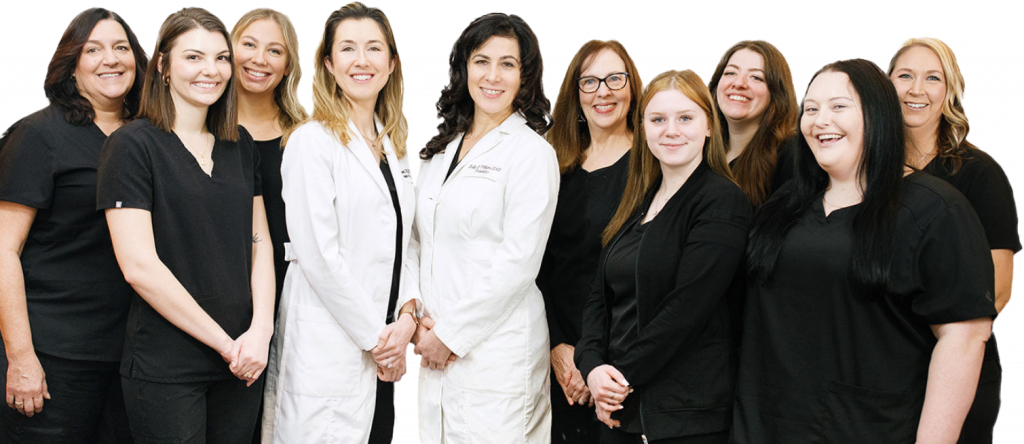
Children’s Orthodontics

How do I know if my child is in need of orthodontic treatment?
It is usually difficult for you to determine if treatment is necessary because there are many problems that can occur even though the front teeth look straight. Also, there are some problems that look intimidating and complex which will resolve on their own. Asking your general dentist is a good reference, but a specialist, called an orthodontist, is your best resource.
From the initial consultation
to post-procedure care,
we are here to support you
every step of the way.

What are the early symptoms of orthodontic problems?
Although determining if treatment is necessary is difficult for you to assess, the following symptoms may help in prompting you to seek orthodontic advice.
Our team is ready to help you achieve the smile you’ve always dreamed of.
Ask your child to open their mouth, and let you look at their teeth. If you see any signs of crooked teeth, gaps between your child’s teeth or overlapping teeth, your child may need orthodontic treatment.
Ask your child to bite all the way down, but keep their lips open so you can see their teeth. Do the front top teeth line up with the bottom? Do the top teeth protrude out away from the bottom teeth? Do the top front teeth cover more than 50% of the bottom teeth? Are the top teeth behind the bottom teeth? All these are indicators for potential orthodontic treatment.
Look at the alignment of your child’s jaw. Does the jaw shift off center when your child bites down? If you see any misalignment or shifting of the jaw, your child may have a skeletal problem, which requires early orthodontic intervention.
These are only some of the obvious symptoms of orthodontic problems.



If you suspect your child is in need of orthodontic treatment, we can help answer those questions. Give us a call today.
What age should my child be seen by an orthodontist?
The American Association of Orthodontists recommends that your child be evaluated by age 7. Early detection of some orthodontic problems is important in order to take early corrective action and avoid more difficult treatment later.
Can you be too old for braces?
No, age is not a factor, only the health of your gums and bone which support your teeth. About 25% of orthodontic patients today are adults and that number is still growing!
We are committed to delivering
Excellence in Dental Care



Trust our expert team to
help you achieve a smile
that reflects your true self
Excellence and Expertise


With dental implants, you can restore your smile, regain your confidence, and enjoy all the benefits of having strong, healthy teeth.
Will it hurt?
Orthodontic treatment has improved dramatically. As a rule, braces make your teeth sore for a few days, but it is not painful. This annoyance can be relieved with an over-the-counter pain reliever. Today’s braces are smaller, more comfortable and use technology that reduces the discomfort. Miniature braces and the highest quality of orthodontic materials can reduce discomfort and treatment time.
Can I still have braces if I have missing teeth?
Yes. When teeth are missing, adjacent teeth will drift into the empty space. This will cause a functional, esthetic or periodontal problem. Orthodontic treatment will correct and prevent these problems and will also provide proper alignment for your dentist to replace the missing teeth.
What is Phase I (Interceptive Treatment) and Phase II treatment?
Phase I or Interceptive Treatment usually starts while the child has most of their baby teeth and a few of their permanent front teeth. This stage in development is usually about the age of 7. The goal of Phase I treatment is to intercept a moderate or severe orthodontic problem early in order to reduce or eliminate it. These problems include skeletal irregularities, cross-bites and crowding. Phase I treatment takes advantage of the early growth spurt and can turn a difficult orthodontic problem into a more manageable one. This helps reduce the need for extractions or surgery and delivers better long-term results and treatment options.
Most Phase I patients require a Phase II treatment in order to achieve an ideal bite. Phase II treatment usually occurs a number of years later. Usually one waits for 12-16 more permanent teeth to erupt before Phase II begins. This most commonly occurs at the age of 12 or 13. The goal of Phase II treatment is to achieve an ideal occlusion(bite) with all of the permanent teeth.
Never again suffer from the use of dentures, or the pain and embarrassment of missing teeth. Ever!

What is Full or Comprehensive Orthodontic Treatment?
This is another name for orthodontic treatment in the permanent dentition at any age. It is more commonly used when a Phase I treatment was not performed.
Does everyone need a Phase I treatment?
Absolutely not! Only certain bites require early intervention. Others can wait until most if not all their permanent teeth erupt.
Can I wait on Phase I/Interceptive Orthodontic Treatment until my child is older?
This is not recommended. If your child needs Phase I treatment this usually means that he has a difficult problem that requires attention now. If no orthodontic action is taken, treatment options become limited, more difficult, and the long-term stability may be compromised. In addition, it may lead to extractions, oral surgery and increased costs.
What is the length or duration of orthodontic treatment?
Braces may be on between 6 months to 30 months, or longer depending on the age of the patient, the severity of the problem, the patient’s cooperation, and the degree of movement possible.
What are extraction and non-extraction therapy, and what are the advantages and disadvantages of each?
Extraction therapy is a technique where some teeth are removed to make room for the other teeth in your child’s mouth. This is in contrast to non-extraction therapy where one expands a patients’ jaw and shave down some teeth to make everything fit.
What are the different types of braces?
There are Designer Braces in gold and sapphire to add a touch of class. Even Outrageous Braces in bright purple, pink, green and black. As a parent, you will have to decide whether you want your children to have plain old-fashioned braces or something modern and stylish.
What are lingual braces?
Lingual braces are mounted behind a patient’s teeth. They were used many years ago, before the advent of Orthocosmetic braces. Lingual braces are rarely used anymore. Generally, lingual braces are more uncomfortable than standard braces. Orthodontic treatment takes twice as long and is more costly. In addition, some people have trouble talking with lingual braces. Presently, lingual braces are only used in special clinical cases.
Is orthodontic care expensive?
When orthodontic treatment is implemented at the proper time, treatment is often less costly than the dental care required to treat the more serious problems that can develop years later. Orthodontic fees have not increased as fast as many other consumer products. Financing is usually available and most offices offer many payment programs that will meet your needs. In addition, many insurance plans now include orthodontics.

CHECK OUR
Patient reviews
“Very knowledgeable and friendly staff…”


